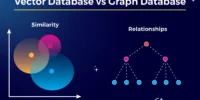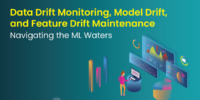Graph databases have emerged as a powerful tool in the world of data management, offering unique advantages for handling complex relationships and interconnected data. In this article, we’ll delve into the fundamentals of graph databases and explore quick tips for effectively harnessing their power.
Understanding Graph Databases
Unlike traditional relational databases, graph databases are designed to handle data that is inherently interconnected. They excel at representing and querying relationships between entities, making them ideal for scenarios where understanding the connections between data points is crucial.
Quick Tips for Harnessing Graph Database Power
1. Model Your Data with Nodes and Relationships
The core building blocks of a graph database are nodes (entities) and relationships. Model your data by defining nodes for different entities and establishing relationships between them. This intuitive structure makes it easier to represent real-world scenarios and complex connections.
2. Utilize Property Graphs for Flexibility
Property graphs enhance the flexibility of graph databases by allowing you to attach key-value pairs, or properties, to nodes and relationships. Leverage properties to store additional information about entities and connections, making your data model more expressive.
3. Optimize Queries for Traversal
Graph databases shine when it comes to traversing relationships. Optimize your queries for efficient traversal by using graph-specific query languages like Cypher. Traversal-oriented queries are well-suited for uncovering patterns and relationships in your data.
4. Index Strategically for Performance
Strategic indexing is crucial for maintaining performance as your graph database scales. Identify key properties that are frequently used in queries and create indexes accordingly. This helps speed up data retrieval and ensures that your queries remain performant, even with growing datasets.
5. Understand and Leverage Graph Algorithms
Graph databases often come with built-in graph algorithms that can uncover valuable insights within your data. Familiarize yourself with algorithms like PageRank, community detection, and shortest path calculations. Applying these algorithms can reveal hidden patterns and relationships.
6. Ensure Data Consistency with ACID Properties
While graph databases prioritize relationships, it’s essential to maintain data consistency. Choose a graph database that adheres to ACID (Atomicity, Consistency, Isolation, Durability) properties to ensure that transactions are reliable and data integrity is preserved, even in complex interconnected scenarios.
7. Explore Use Cases Beyond Social Networks
While social networks are a classic use case for graph databases, their applicability extends far beyond. Explore diverse use cases such as fraud detection, network analysis, recommendation engines, and knowledge graphs. Graph databases offer value in any scenario where relationships play a crucial role.
The Impact of Graph Databases
8. Enhancing Relationship-Centric Applications
Graph databases are instrumental in enhancing relationship-centric applications. Whether it’s uncovering fraud networks, providing personalized recommendations, or optimizing supply chain networks, the ability to navigate and query relationships efficiently is a game-changer.
9. Powering Real-Time Recommendations
Graph databases excel in real-time recommendation scenarios. By analyzing the relationships between users, products, or content, these databases can deliver personalized and context-aware recommendations, contributing to a more engaging user experience.
10. Facilitating Complex Querying in Healthcare
In healthcare, graph databases are valuable for navigating complex patient relationships. They enable healthcare providers to quickly understand patient histories, relationships between healthcare professionals, and the flow of medical data, leading to more informed decision-making.
Conclusion: Navigating the Interconnected World of Data
Graph databases represent a paradigm shift in data management, providing a powerful way to navigate the interconnected world of data. By embracing the tips outlined in this guide, you can effectively harness the unique capabilities of graph databases and unlock new possibilities for understanding relationships within your datasets. Dive into the world of graphs and elevate your data management strategies to new heights. ️








